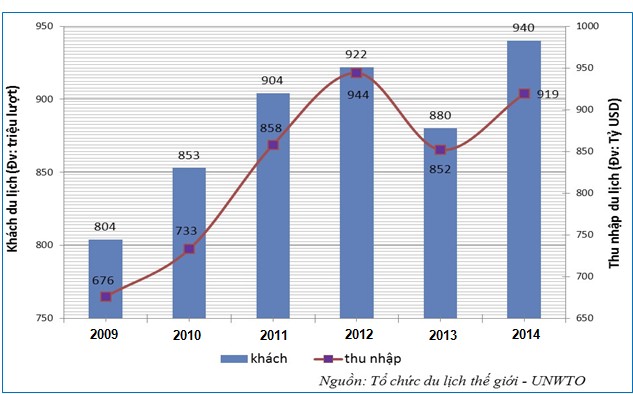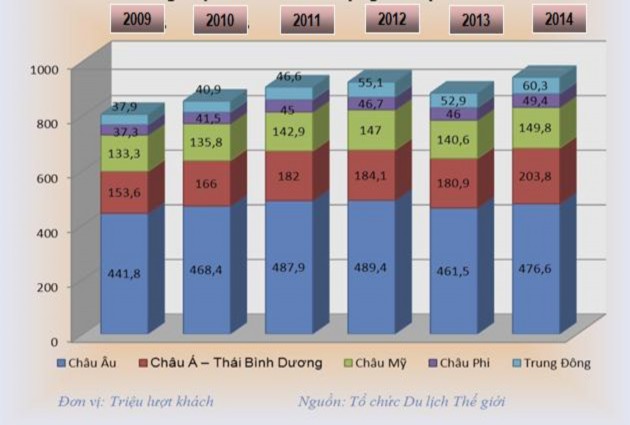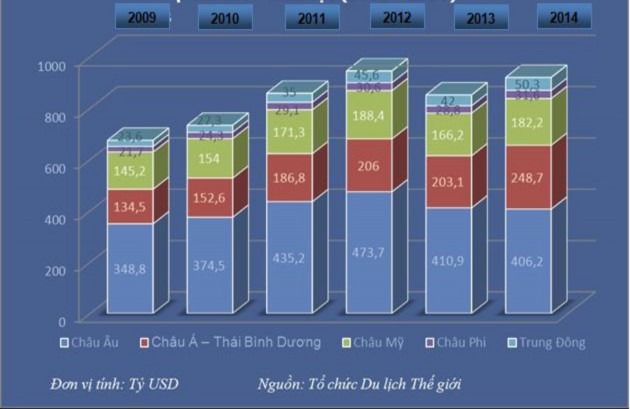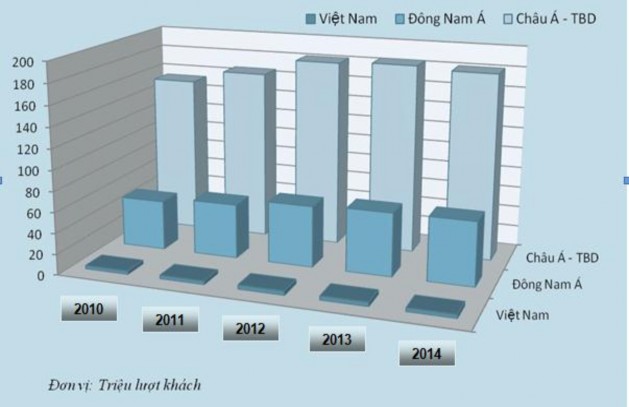information/research component of destination management pertains to the development and effective use of information systems that provide managers with the information required for understanding visitor needs and for effective product development. This also involves the regular monitoring of visitor satisfaction and the tracking of industry performance. Each DMO also has the responsibility to disseminate key market and performance information to its members on a timely basis.
e. Human Resource Development: Programs to produce trained industry employees: Some destinations have developed programs and mechanisms targeted at producing industry-specific trained employees and graduates with management skills designed to meet the specific needs of the tourism and hospitality industries. All industries compete to attract a talented workforce. Such programs can enable a destination to better provide for its own human-resource needs.
f. Finance & Venture Capital: Programs to facilitate funding for tourism development: While financial institutions will normally fund most private sector tourism development, some public sector support or programs can assist the availability of finance and venture capital to tourism developers. For example, guided by public policy, governments or DMOs can institute programs to provide seed funding, grants, loan guarantees, depreciation allowances, capital gains exclusions, taxation concessions or other such incentives to investors to stimulate private investment for tourism development. Such programs should clearly be designed to promote the achievement of a destination vision.
g. Visitor Management: Programs to control positive & negative visitor impacts: As the travel and tourism industry continues to grow rapidly, some destinations, which experience large numbers of visitors, have found that they may need to introduce policies and systems required to control visitor numbers or behaviour in order to exert some influence over visitor impacts. Where this occurs, industry cooperation is important. In the absence of such cooperation, governments or other regulatory authorities may be forced to act if problems are left unattended. DMOs can play an important role in coordinating efforts to institute such industry-regulated arrangements.
h. Crisis Management: Preparedness and capacity to cope with crises or disasters:
An increasingly important challenge for destination managers involves crisis management. Destinations, from time to time, have to deal with various crises affecting visitors as well as the aftereffects in terms of a tarnished destination image. Anecdotally, in recent years, it seems that crises have become more problematic for destinations. Crises may arise for many different causes, including the outbreak of disease, accidents, crime, natural disasters, political and social problems, union strikes, and terrorism, etc., to list a few. When such crises occur, destinations need to be able to respond in an effective way to deal with the immediate impact of the event as well as its longer-term consequences. Destinations which respond to such eventualities more effectively or, better still, act to prevent or minimise them to the extent that is possible, enhance their competitive position. Proactive crisis management or disaster planning is therefore becoming an additional challenge and responsibility for forward-thinking destinations.
i. Resource Stewardship: extent of efforts to preserve fundamental qualities & assets:
Resource stewardship is a concept that stresses the importance, indeed the obligation, which destination managers have, to adopt a 'caring' mentality with respect to the resources that make up the destination. This
involves the effective maintenance of those resources and a careful nurturing of those that are particularly vulnerable to damage that may be caused by tourism. The model is then not one of simple economic competitiveness but one of long term 'sustainable competitiveness' that acknowledges the stewardship of ecological, social, and cultural resources.
5. Qualifying and Amplifying Determinants: Factors which leverage or limit competitiveness
The potential competitiveness of a destination is conditioned by a number of factors which fall outside the scope of the other four groups of competitiveness factors. This group of factors might alternatively have been labelled situational conditioners because it represents factors which affect the competitiveness of a tourist destination by defining its scale, limit, or potential. These qualifiers and amplifiers moderate or magnify destination competitiveness by filtering or leveraging the influence of the other four groups of factors. Their effect may be so important that they represent a 'ceiling' to tourism demand and potential. However, despite the potential importance of these factors, it may be difficult for the tourism industry alone to control or influence their impact on the destination's competitiveness.
a. Location: Favourable/unfavourable proximity of the destination to major markets: A physically remote destination, that is, one that is far from the world's major tourist origin markets, is clearly at a distinct disadvantage in terms of accessibility, compared to another destination which neighbours major tourist markets and is therefore better able to convert latent visitor interest into actual visitation. The closer destination has the advantage of familiarity and lower travel cost (both monetarily and in terms of the opportunity cost of travel time). Although there is nothing a destination can do to change its physical location, its location relative to important origin markets for tourists can change over time. For example, in the Asian region the economies of several countries have improved markedly over a relatively short space of time. The wealth generated in these countries and the overflow effect to other neighbouring countries has created growing tourism markets in this region. This has resulted in a shift in the competitiveness of tourism destinations as a result of this one factor, location, alone.
b. Safety & Security: Degree of freedom from potential forms of harm to tourists: Safety and security concerns can affect the choice of destination. Some intrepid tourists may disregard travel advisories, warnings, or adverse media coverage of events in dangerous destinations. Indeed, some travellers might even seek out dangerous or risky experiences for the excitement and challenge they represent. In fact, most people tolerate a certain degree of uncertainty and risk but their tolerance levels are normally relatively low. The need for safety, along with the physiological needs of food and shelter, represent primary motivational forces behind human behaviour. If potential visitors are gravely concerned about crime, the quality of drinking water, the risk of natural disasters, the standards of medical services, terrorism, etc., a destination's competitive strengths may seem quite minor by comparison. Tourism authorities may launch recovery programs in response to these problems and these may help somewhat but problems such as these may dwarf a destination's ability to cope effectively.
c. Cost/Value: Factors affecting the overall affordability of the destination: The cost of a destination to a foreign visitor is influenced by a broad range of local, domestic, and global forces, and because cost, in itself,
is so fundamental to the question of competitiveness, this factor is treated as a qualifying and amplifying determinant. The monetary cost of a destination is governed by three factors: (1) the cost of transportation to and from the destination, (2) the currency exchange rate (in the case of international travel), and (3) the local cost of tourism goods and services. Many aspects of the global (macro) environment (e.g. international trade balances, relative interest rates, relative inflation rates, taxes, etc.) and competitive (micro) environment (e.g. competition, productivity, cost of supplies, labour rates and agreements, etc.) will affect the cost of tourism services in the destination. Consequently cost is largely governed by economic structures within the destination and its comparative international position.
d. Interdependencies: Favourable/unfavourable associations with other destinations:
The competitiveness of any destination may be affected by the competitiveness of other destinations since competitiveness is a relative concept. But beyond this, there are interdependencies that can significantly affect the fortunes of individual destinations. This can best be illustrated if we consider the situation of 'stopover' destinations. Some destinations depend, at least to some significant extent, on travellers who break their journey to or from more distant destinations. Should the attractiveness of those distant destinations change either positively or negatively, the stopover destination is sure to experience some consequent impact. Another example concerns the impact of terrorist events, wars, and crime in a neighbouring region even though the destination itself might be free of these problems. So the destination's competitiveness can be impacted by what is occurring in other destinations with which it shares an interdependent relationship.
e. Awareness & Image: Extent to which the destination is well-known & desired:
The image of a destination can take time to change even though the reality at a destination no longer accords with a pre-existing negative or positive image. Hence, a negative image can qualify improvements at a destination and a positive image can cushion the effect of problems such as crime or high living costs. Low market awareness of the destination can also ensure that destination image changes slowly but the effect of awareness also impacts the likelihood that a potential tourist will even consider visiting a destination. As there are very many destinations today competing for a space in the minds of intending tourists, it is important that tourists are sufficiently aware of a destination if it is likely to at least be considered by would- be visitors. More broadly, however, destination image is the 'lens' through which tourists perceive all characteristics of a destination and therefore effectively all of the other competitiveness factors.
f. Carrying Capacity: Extent to which the destination is at or close to its viable limit:
If tourist demand is close to, or in excess of a destination's sustainable carrying capacity, further tourism growth will result in deterioration of tourism assets and resources, and in the quality of the visitor experience. This may ultimately harm a destination's comparative attractiveness. Venice, for example, is clearly an extremely popular destination that is under stress in terms of its carrying capacity. It remains very popular but struggles to cope with visitors at certain times of the year. Indeed, the restricted system of access to Venice effectively serves as a ceiling on visitor numbers during these peak periods.
Phụ lục 25. Các thuộc tính đánh giá năng lực cạnh tranh Phát triển Kinh tế Thành phố theo cụm ngành CCED của Choe và Roberts, 2011
Group 1. Factor conditions | ||
Yếu tố 1. Lao động | Factor1.Labor | |
1) Sự sẵn có về lao động có kỹ năng | 1) Availability of skilled labor | |
2) Kỹ năng quản lý | 2) Management skills | |
3) Hiệu quả và năng suất lao động | 3) Efficiency and productivity of labor | |
4) Cơ sở giáo dục và đào tạo | 4) Education and training facilities | |
Yếu tố 2. Cơ sở hạ tầng | Factor2.Infrastructure | |
1) Chất lượng dịch vụ hạ tầng (Hậu cần) | 1) Quality of infrastructure services (logistics) | |
2) Chất lượng dịch vụ hạ tầng (Tiện ích) | 2) Quality of infrastructure services (utilities) | |
3) Chi phí dịch vụ | 3) Cost of services | |
4) Chất lượng dịch vụ viễn thông | 4) Quality of telecommunications services | |
Yếu tố 3. Nguồn lực ưu đãi | Factor 3. Endowed resources | |
1) Gần với nguồn nguyên liệu thô | 1) Proximity to raw materials | |
2) Chi phí nguyên liệu thô nội địa so với nhập khẩu | 2) Cost of local raw materials than imports | |
3) Chất lượng nguyên liệu thô | 3) Quality of raw materials | |
Yếu tố 4. Môi trường xã hội | Factor 4. Social Environment | |
1) Chất lượng môi trường sống của lao động | 1) Quality of life of workforce | |
2) Điều kiện làm việc | 2) Workplace conditions | |
Nhóm 2. Các điều kiện về cầu | Group 2. Demand conditions | |
Yếu tố 1. Các thị trường | Factor1. Markets | |
1) Mở rộng các thị trường địa phương và trong nước | 1) Expanding domestic and local markets | |
2) Mở rộng các thị trường xuất khẩu | 2) Expanding export markets | |
Yếu tố 2. Các sản phẩm mới | Factor 3. New Products | |
1) Khả năng phát triển các sản phẩm mới đáp ứng nhu cầu | 1) Demand expansion capacity for new products | |
2) Phản ứng và sáng tạo trước những thay đổi | 2) Responsiveness to change and innovativeness | |
Yếu tố 3. Môi trường kinh doanh | Factor3. Business Environment | |
1) Chất lượng và độ tin cậy về sản phẩm - dịch vụ | 1) Quality and reliability of product or service | |
2) Hiểu và hỗ trợ bền vững đối với sản phẩm | 2) Product sustains awareness and support | |
3) Tinh thần kinh doanh mạnh mẽ | 3) Strong business ethics |
Có thể bạn quan tâm!
-
 Kết Quả Khảo Sát Các Chuyên Gia Đánh Giá Năng Lực Cạnh Tranh Cấp Tỉnh Trong Lĩnh Vực Du Lịch
Kết Quả Khảo Sát Các Chuyên Gia Đánh Giá Năng Lực Cạnh Tranh Cấp Tỉnh Trong Lĩnh Vực Du Lịch -
 Thang Đo Các Yếu Tố Đầu Vào Và Mức Độ Hấp Dẫn Du Lịch
Thang Đo Các Yếu Tố Đầu Vào Và Mức Độ Hấp Dẫn Du Lịch -
 Danh Sách Các Đơn Vị Hcsn Du Lịch Có Các Chuyên Gia Tham Gia Chấm Điểm Bộ Tiêu Chí Lý Thuyết Đánh Giá Năng Lực Cạnh Tranh Cấp Tỉnh Trong Lĩnh Vực
Danh Sách Các Đơn Vị Hcsn Du Lịch Có Các Chuyên Gia Tham Gia Chấm Điểm Bộ Tiêu Chí Lý Thuyết Đánh Giá Năng Lực Cạnh Tranh Cấp Tỉnh Trong Lĩnh Vực -
 Nghiên cứu mô hình năng lực cạnh tranh cấp tỉnh trong lĩnh vực du lịch - 28
Nghiên cứu mô hình năng lực cạnh tranh cấp tỉnh trong lĩnh vực du lịch - 28
Xem toàn bộ 233 trang tài liệu này.
4) Readiness to face risk | ||
Nhóm 3. Chiến lược, cấu trúc và đối thủ cạnh tranh của doanh nghiệp | Group3. Firm strategy, structurre and rivalry | |
Yếu tố 1. Cấu trúc | Factor 1. Structure | |
1) Sự hiện diện của các doanh nghiệp liên doanh nước ngoài | 1) Presence of foreign and joint-venture companies | |
2) Sự linh hoạt trong hệ thống sản xuất | 2) Flexibility of production systems | |
Yếu tố 2. Hợp tác | Collaboration | |
1) Hợp tác mạnh mẽ giữa các doanh nghiệp trong ngành | 1) Strong industry-firm collaboration | |
2) Phát triển vốn kiến thức chung về ngành | 2) Shared development of industry knowledge capital | |
3) Mạng lưới kinh doanh và vốn xã hội mạnh mẽ | 3) Strong social capital and business networks | |
4) Lãnh đạo tầm quốc gia hay quốc tế | 4) National or international leadership | |
5) Sự tham gia của người dân và cộng đồng | 5) Civic entrepreneurship and community engagement | |
Yếu tố 3. Định hướng công nghệ | Factor 3. Technology Orientation | |
1) Mức độ cao trong áp dụng công nghệ tại doanh nghiệp | 1) High level of technology application in firms | |
Nhóm 4. Các ngành công nghiệp hỗ trợ có liên quan | Group 4. Related supporting industries | |
Yếu tố 1. Chuỗi cung ứng | Factor 1. Supply Chains | |
1) Năng lực của dịch vụ hỗ trợ kinh doanh tại địa phương | 1) Strength of local business support services | |
2) Khả năng đáp ứng của các dịch vụ hỗ trợ tại địa phương | 2) Responsiveness of local support services | |
3) Chất lượng của dịch vụ hỗ trợ tại địa phương | 3) Quality of local support services | |
Yếu tố 2. Giá trị gia tăng | Factor 2. Value Addition | |
1) Khả năng gia tăng giá trị cho các chuỗi cung ứng | 1) Potential to add value to supply chains | |
2) Nhận thức kinh doanh về giá trị gia tăng tiềm năng | 2) Business awareness of value-adding potential | |
Nhóm 5. Vai trò của chính phủ | Group 5. Government support | |
1) Hỗ trợ của Chính phủ trong phát triển cụm ngành | 1) Government support for cluster development | |
2) Hệ thống đăng ký kinh doanh nhanh gọn | 2) Streamlined business approval systems | |
3) Hỗ trợ sự phát triển bền vững của ngành | 3) Support for sustainable industry development | |
4) Thực thi các quy định về doanh nghiệp | 4) Enforcement of business regulations | |
5) Hỗ trợ nghiên cứu và phát triển | 5) Support for research and development |
Phụ lục 26. Danh sách các chỉ số cốt lõi, các chỉ số bổ sung và các chỉ số phát triển trong tương lai đo lường năng lực cạnh tranh trong du lịch, OECD (2013)
The main indicartors | The sub – indicators |
Tourism performance and impacts | 1. Tourism Direct Gross Domestic Product: A leading international measure of the tourism contribution to GDP |
2. Inbound tourism revenues per visitor by source market: A measure of the economic activity of visitors | |
3. Overnights in all types of accommodation: A measure of tourism flows in accommodation | |
4. Exports of tourism services: A measure showing the contribution of tourism to exports | |
Ability of a destination to deliver quality and competitive tourism services | 5. Labour productivity in tourism services: A measure providing evidence of the productive potential of the tourism economy |
6. Purchasing Power Parity (PPPs) and tourism prices: A measure showing tourism price competitiveness using PPPs | |
7. Country entry visa requirements: A measure of entry visa requirements including methods of visa issuance | |
Attractiveness of a destination | 8. Natural resources and biodiversity: A measure of a country‟s stock of natural assets |
9. Cultural and creative resources: A measure of a country‟s cultural and creative attractions, activities and events | |
10. Visitor satisfaction: A measure of demand side attractiveness value, based on current and future competitiveness | |
Policy responses and economic opportunities | 11. National Tourism Action Plan: A measure indicating effectiveness in assisting to improve the competitiveness of tourism |
Supplementary Indicators (2014) | |
Tourism performance and impacts | 12. Market diversification and growth markets: A measure to capture the broad basis of performance in several source markets.Countries with a wide range of source markets and a focus on growth markets would receive higher scores than countries with a narrow market dependency focus |
Ability of a destination to deliver quality and competitive tourism services | 13. Employment in tourism by age, education levels and type of contracts: A measure that would assess ability to attract, retain and develop talent in the industry to enable improved competitiveness |
14. Consumer Price Index for tourism: A complementary measure to others such as PPPs | |
15. Air connectivity and inter-modality: A measure of competitiveness revealed in air routes, flight time from main markets and passenger numbers | |
Attractiveness of a destination | 16. OECD Better Life Index: A measure using a tourism focused version of the index |
Future Development Indicators (2015) | |
Ability of a destination to deliver quality and competitive tourism | 17. Government budget appropriations for tourism: A measure of national government tourism expenditure per capita |
18. Company mortality rate: A measure of the enterprise activity and business churn | |
Policy responses and economic opportunities | 19. Use of e-tourism and other innovative services: An Index measure on innovation and use of social media in the tourism industry |
20. Structure of tourism supply chains: An Index measure of industry thickness, clusters and competitiveness, existing/potential | |
Source: OECD survey on Measuring Competitiveness in tourism, 2013
Phụ lục 27. Hiện trạng khách và tổng thu từ du lịch thế giới và khu vực 2009 -2014

Phụ lục 28. Lượng khách du lịch quốc tế trên thế giới phân theo châu lục 2009-2014

Phụ lục 29. Thu nhập du lịch quốc tế trên thế giới phân theo châu lục 2009-2014

Phụ lục 30. Khách quốc tế đến Việt Nam so với toàn khu vực Đông Nam Á - Đông Á và khu vực Châu Á Thái Bình Dương 2010-2014





